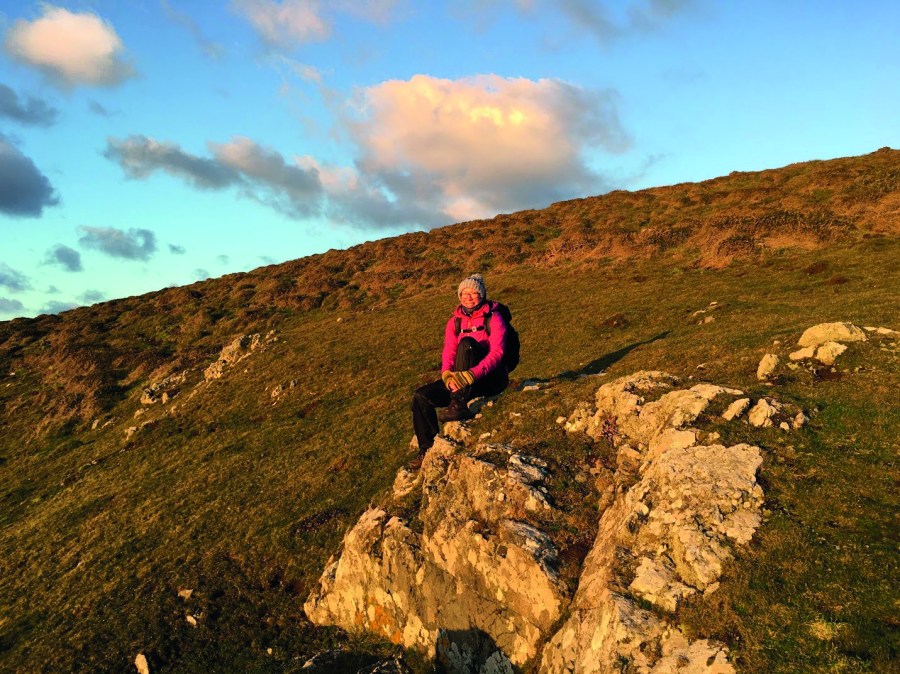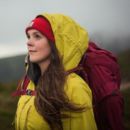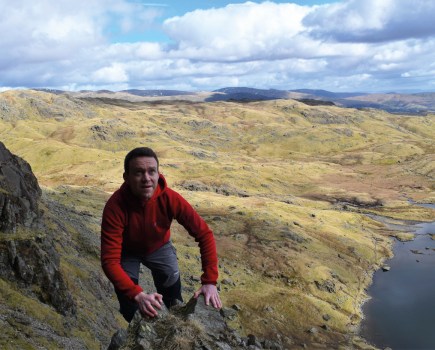Sarah Irving, The Urban Wanderer, encourages an appreciation of the outdoors wherever you may live.
“It is so easy to forget the outdoors is everywhere,” Sarah Irving, a Stockport-based freelance travel writer and cat-sitter, tells The Great Outdoors. As The Urban Wanderer, Sarah is an advocate for environmental and walking initiatives. Her curiosity and drive to explore help her make the most of small-scale adventures outdoors wherever she is – rather than wishing she was somewhere else.
Here, she answers our questions on FOMO (Fear of Missing Mountains), walking in the dark and the reverse commute.
TGO: How do you focus on what’s in front of you and what advice might you have for our readers who sometimes find themselves wishing the ‘outdoors’ felt a bit closer or more accessible?
Sarah: It is so easy to forget that the ‘outdoors’ is everywhere. You are on an adventure in the outdoor world when you step out of your front door. Yes, there might not be views across many counties, a steep ascent that makes you question why you’re doing it, or the most immense sky you have ever seen, but there are all those things on a smaller scale if you look for them. It might look and feel a bit different, but with a dose of curiosity and a drive to explore, you will find them. Pay attention to the small things. Look around you and see what there is in the area. You will be surprised where urban nature pops up, be curious and play a little. It all makes for the place you’re in being that bit more interesting.
One of my favourite things I implemented to help explore my local area was to create a Reverse Commute. Working from home, I would find it easy to skip going outside. If I had been working in an office in town, I would have had to make the time for my commute anyway, so I decided to make a necessary walking commute where I started and ended it from my house. I would go at the same time every day, bringing about many surprising benefits in addition to getting out for a walk. I started to make local friends who were also walking at the same time. I began seeing the incremental changes to each season – something I recommend everyone does, whether in an urban environment or somewhere more rural. You start finding that the weather is just part of those changes and begin to enjoy the rain and wind as part of the passing year.
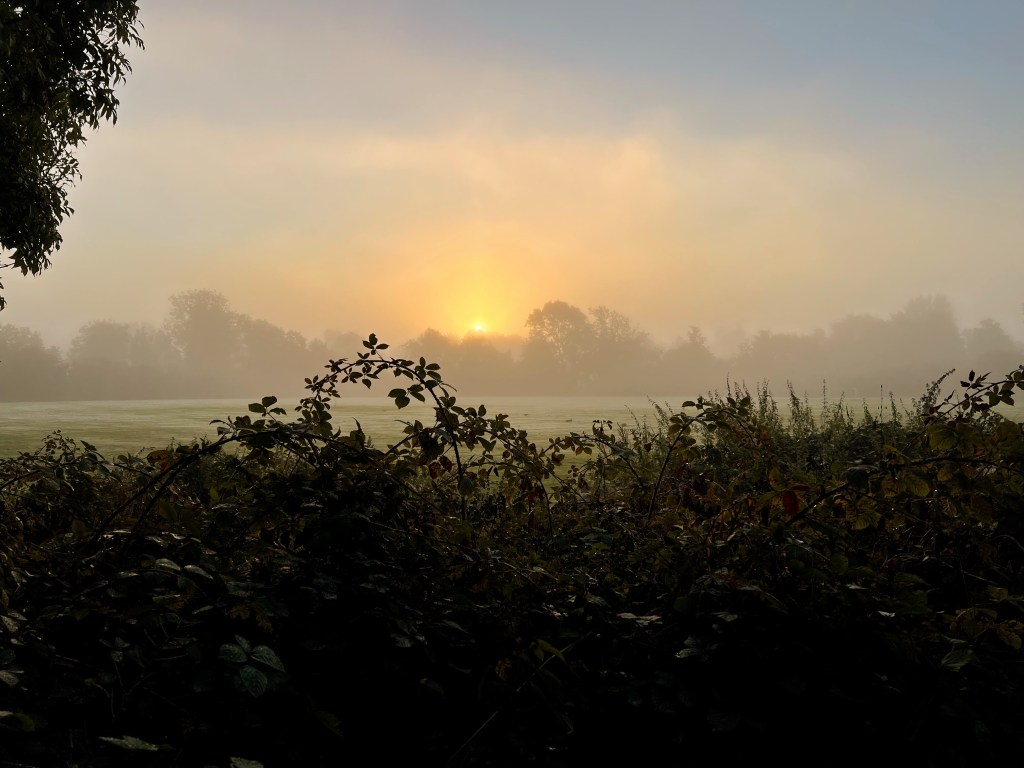
A reverse commute through Stockport is vital for The Urban Wanderer Credit: Sarah Irving
Another thing that makes the ‘outdoors’ closer to home is to hunt out the pockets of green spaces where you live. You will be surprised to see how many little parks, footpaths and fields are even in some of the biggest cities. Manchester city centre has some lovely parks and canals ready and waiting for a walk, al fresco lunch or coffee break. Wander until you find one and see what else you might discover on the way there.
TGO: Where did the love of walking begin for you?
Sarah: My love of walking was a surprising journey. After loving walking and hiking as a child with the Brownies and Guides, I had a fall in my early 20s, which left me with a long-term knee injury, meaning that I walked with crutches or a walking stick for over ten years. While on crutches, I hobbled around Manchester city centre as there were accessible benches, toilets and cafes to rest when needed. It was a safe space for walking and strengthening again after my injury. It became my escape from university art studies and inspiration for my work. After working hard to get off my crutches, I got a reinvigorated taste for hills and dales. Starting small, I would explore parks in Greater Manchester (Heaton Park is a fantastic park for hills, vistas, and long walks on solid paths). Once I felt confident about the local adventures, I went further to Wales, the Lakes and Yorkshire. In answer to your question about which inspired the other, the urban walking led me back to the countryside rambles, but my heart has a place for them both. For anyone getting started, the city and urban streets are a great place to start.
TGO: Can you explain the draw of cities for you personally?
Sarah: I grew up in a semi-rural village on the Wirral, where I spent more time on country paths and beaches than in the cities, although I was lucky to have excellent public transport links to Liverpool and Chester. I moved to Manchester for university and fell in love with the bustle and interest that an urban space offers to the wanderer in me. It was big and busy, yet I could explore almost anonymously in the crowds and through the back streets without anyone knowing I was there.
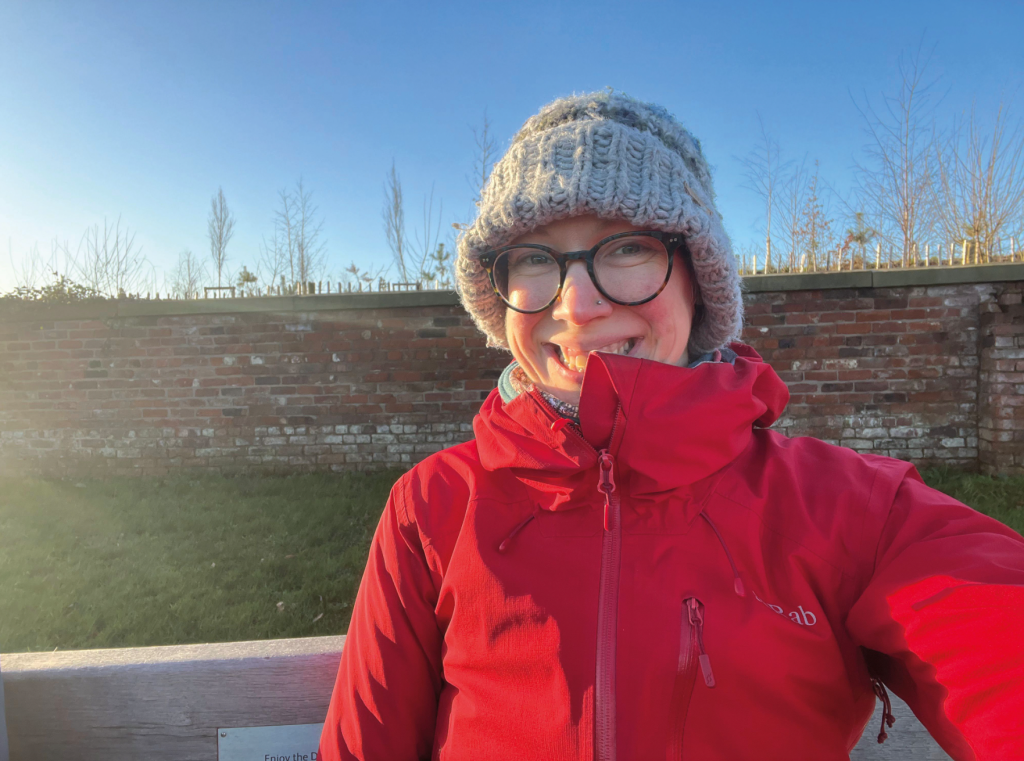
The Urban Wanderer wandering through the suburbs. Credit: Sarah Irving
Having visited Manchester a lot in my youth, I always found it quite metropolitan. There was so much happening in every corner of the city that you could feed your curiosity for days. I’m a keen people watcher. For me, cities offer more than a place for shopping. They tell stories of the past, and you get a glimpse into the future through the emerging cultures and the people who live and spend their time there. I love the overlooked parts of places – the bits most people think are grim and grimy – because of the fascinating patterns, artwork and political statements that happen there. You will often find me in the backstreets of cities, taking photographs of brutalist buildings, unusual architectural delights, or some strange still-life placement of objects, sharing the story of the busy nightlife of Manchester. I am also very chatty, and love nothing more than connecting with the people of a city.
TGO: Can you tell us a little bit more about your passion for connecting people who live in cities with the great outdoors both by better (and more sustainable) transport links to the countryside as well as helping them discover the green space that can be found in urban areas?
Sarah: Everyone should have access to green spaces for personal wellbeing and the social aspect of places where you can slow down and relax. When you see how well-used parks are across Europe, where many people are living in flats, you can see the benefit of having nearby access to open spaces for meeting friends, walking, cycling and playing sports. As Manchester builds upwards, we must ensure everyone can access open, natural spaces.
I love public transport for connecting city dwellers with open space because it reduces the number of cars on the roads and plays a part in the journey to your destination. Car ownership is both expensive and challenging when you live in the city centre. Public transport offers an excellent opportunity to visit different places across our region from the comfort of a seat with a spectacular view.
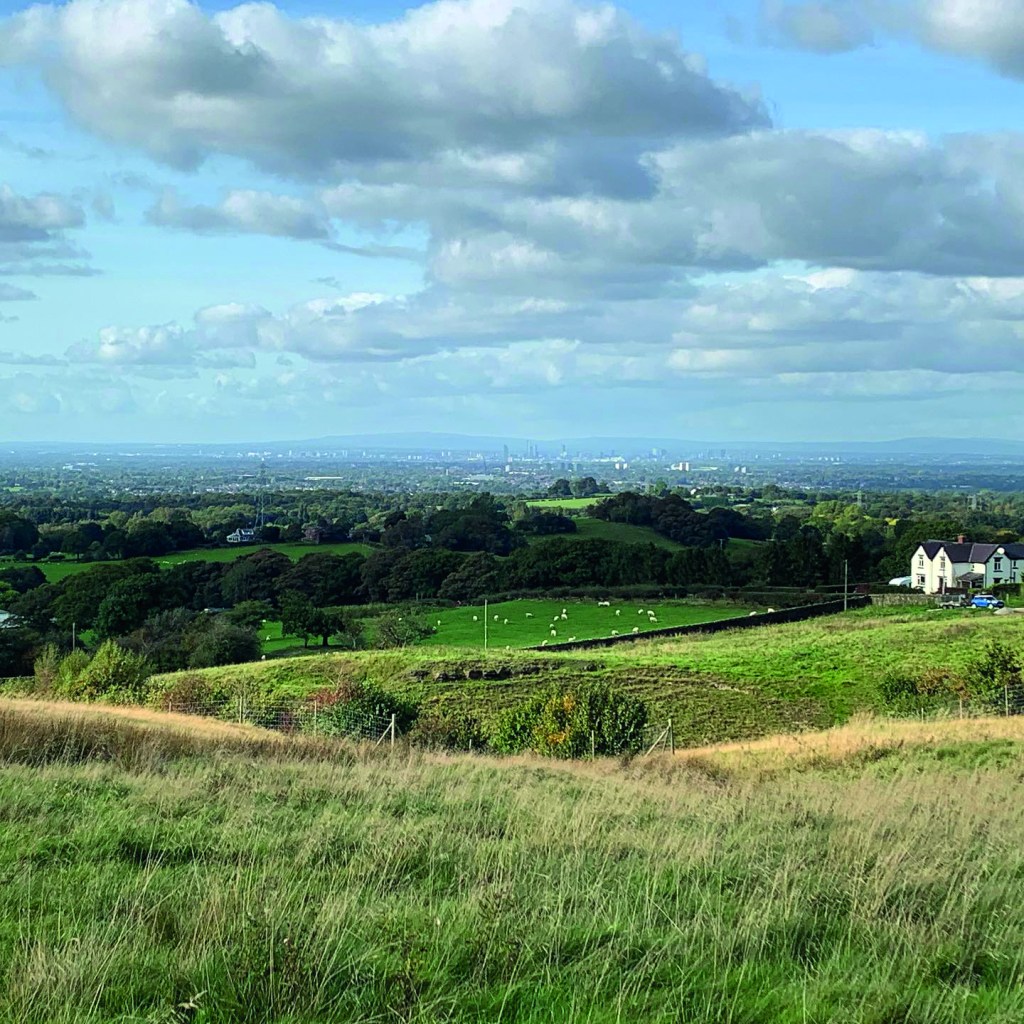
The Manchester skyline from Lyme Park. Credit: Sarah Irving
Greater Manchester has so much to offer, yet many outdoorsy folks (me included) will often head out of the area to visit Yorkshire, the Peaks or the Lakes for our countryside walking. Greater Manchester should get more exciting coverage it should for hiking and walking opportunities. You can enjoy the rolling hills of Oldham, Rochdale, Bury or Blackburn by public transport from the Manchester city centre. The GM Ringway is an excellent example of a project working to encourage more people to use our local transport links from the city to explore what the region offers in terms of outdoor adventures.
TGO: What are your favourite countryside or green space walks to do from where you live?
Sarah: The Northern Train to the Peaks is an excellent way to spend time. I have so many favourites, but now, my ultimate is the Bollin Valley Way, as I can walk there from my doorstep, passing through Styal Woods on the way. I am fascinated by the Bollin Valley Tunnel by Manchester Airport (I featured it in my piece for Lonely Planet Experience England) as it runs the length of 15 double-decker buses under Runway 2 of Manchester Airport. It has been designed to support the valley’s biodiversity and includes bird and bat boxes along the length of the tunnel. The Bollin Valley Way is a lovely, varied walk with plenty of countryside views, but you will access towns along the way if you need to grab a drink or toilet stop. I am also lucky to be on the Cheshire and Lancashire train lines to explore stops along the way.
TGO: As a nature-lover yourself, do you feel our hills and mountains should be more accessible to those who live in cities? Or do you feel more strongly that our cities and urban areas should be greener in order for people to enjoy those health benefits without having to head out into the hills hours away (which is, realistically, not an option for all)?
We should make nature more accessible to everyone, especially those living in cities and urban spaces. As the population grows, more people will live in city flats, so planning for green areas and natural habitats for humans and wildlife is essential. While I think we should make access to the countryside more accessible, we will inevitably all spend more time in the urban areas – whether we particularly like it or not. Having natural spaces closer to home is far better for wellbeing than travelling further away, which is excellent for everyone. You don’t have to make a day of it, spend a lot of money, or need the knowledge and skill to navigate. When I need some headspace, I will head to a local park just for the feeling of open space and the ability to move in a natural space.
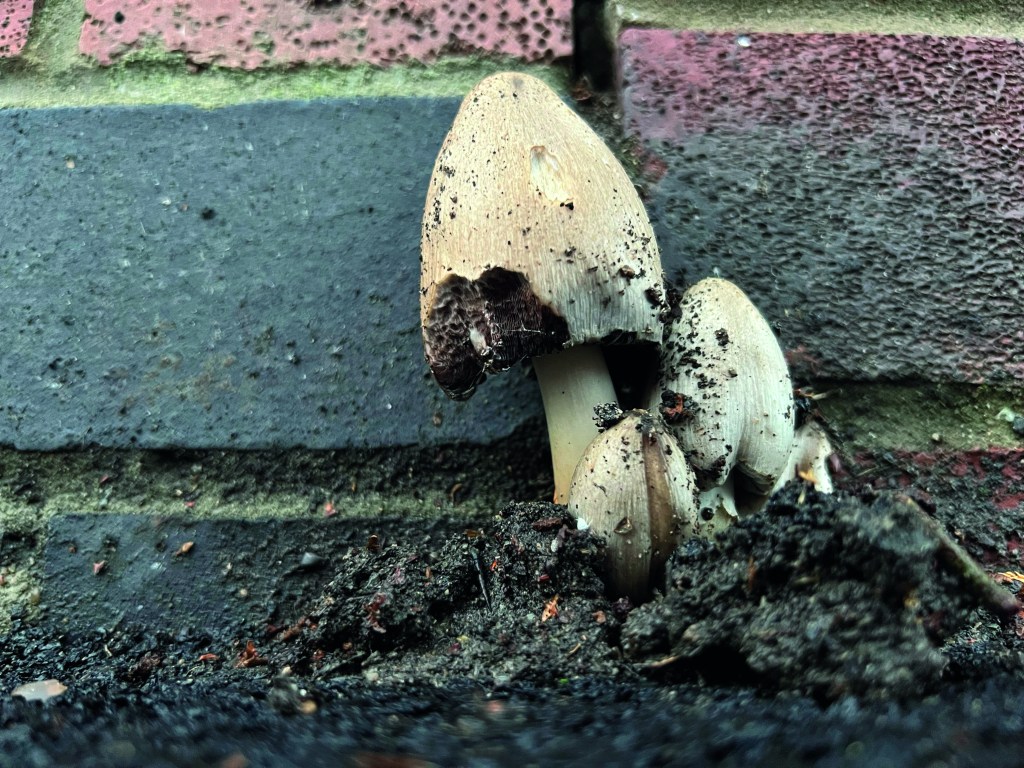
Noticing the unexpected. Credit: Sarah Irving
Giving affordable, reliable and accessible public transport options across the Greater Manchester region would be a great start (the Bee Network is making a start on this, which is brilliant) so more people can access our region’s countryside, hills and lakes. However, we are still some way off from that. Starting from where we are, building green spaces, play areas, and seating in all developments would be a starting point for increasing access to the outdoors, making a more sociable city, and creating urban spaces that are more enjoyable places to live and work.
TGO: Can you tell us about your work with CPRE?
Sarah: My work with CPRE was on the GM Ringway project, a fantastic initiative encouraging more people to walk and explore Greater Manchester using public transport. The GM Ringway is a set of 20 staged walking routes covering 300km around all ten boroughs of Greater Manchester, all accessible by public transport from the city centre. While many of the walks are for more experienced walkers, there are a variety of shorter and circular walks and accessible ones for people exploring on wheels or with little ones – like the circular walk at Hollingworth Lake in Rochdale, or Sale Water Park. In my work with CPRE, I connected community groups and other charitable organisations, like Manchester City of Sanctuary, which works with asylum seekers and refugees, and the Mile Shy Club, which gets everyone active, whatever their fitness level, with the route so their members can benefit from walking, meeting new people and accessing the fantastic green spaces across the region.
The routes are available in map form from the website and also in a picture and accessible app form on the Go Jauntly app for those of us who enjoy following simple steps with pictures.
TGO: Some folks find it hard to stay motivated to get outside during the darker months. What’s been your personal experience of this and what advice might you give them?
Sarah: Getting outside when it is dark and when the weather is wet, windy or cold can be more challenging. I am a bit strange. I love the darker months as the streets are quieter, and you can see the sunrise and sunset in one day without getting up too early or staying up late! I enjoy taking photographs while walking; the atmosphere in the darker months and the light’s glow excite me.
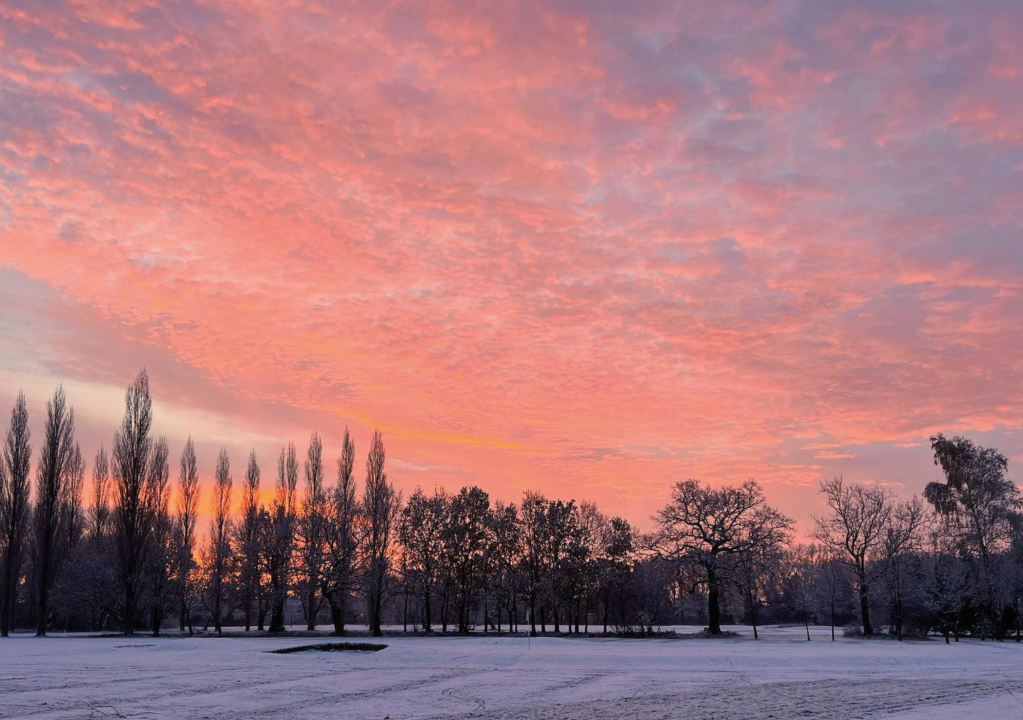
Sunrise on Stockport. Credit: Sarah Irving
Making outside time a necessity and building it into your routine helps – my reverse commute did this for me. Making time for a lunchtime walk can help if you’re not keen on getting out in the dark, or enlisting a friend to go with you so you can chat while you go is a great motivator, too. Grab your reusable cup, fill it with your favourite hot drink and off you go. Cheap, easy and sociable for taking a break from the things you fill your days with.
Setting yourself a challenge to get out every day is another excellent motivator. Set yourself a target to take a photo a day for a month, or walk for 20 minutes from your doorstep as a refresher, no matter the weather. A pedometer also helps to keep you going when it nudges you to let you know you haven’t done much that day.
But mostly, wear appropriate clothes for the weather. Wear waterproof boots and jackets when it’s wet and layers when it is cold. There is nothing more miserable than feeling yuck. A few minutes of planning before you go out can be the difference between a fun walk in the wet and a grumpy one.
TGO: Finally, what do you find most joyful about walking in your city and walking in you surrounding countryside? Do the feelings and benefits overlap at all?
Sarah: That’s a tricky question! I think walking in the city helps me stay connected to where I live. It is an ever-changing landscape where each visit shows me something new about the place I have called home for over 22 years. The skyline is taller, the streets are filled with many different cultures, languages and people, and the soundscape is evolving.
Walking in my surrounding countryside has a similar experience with the changing landscape. But I can experience it differently. The mud underfoot, the dampness from the overhanging trees and the seasonal changes in the sounds of nature make it a joyous experience for me.
While they are both different experiences, I find that the subtle changes make them the most joyful. Regularly spending time in urban and countryside settings opens your senses to the tiny differences. You notice the seasons moving and appreciate them for what they bring – even when that means wrapping up and wearing waterproofs to enjoy them.
Follow Sarah’s adventures at theurbanwanderer.co.uk.

